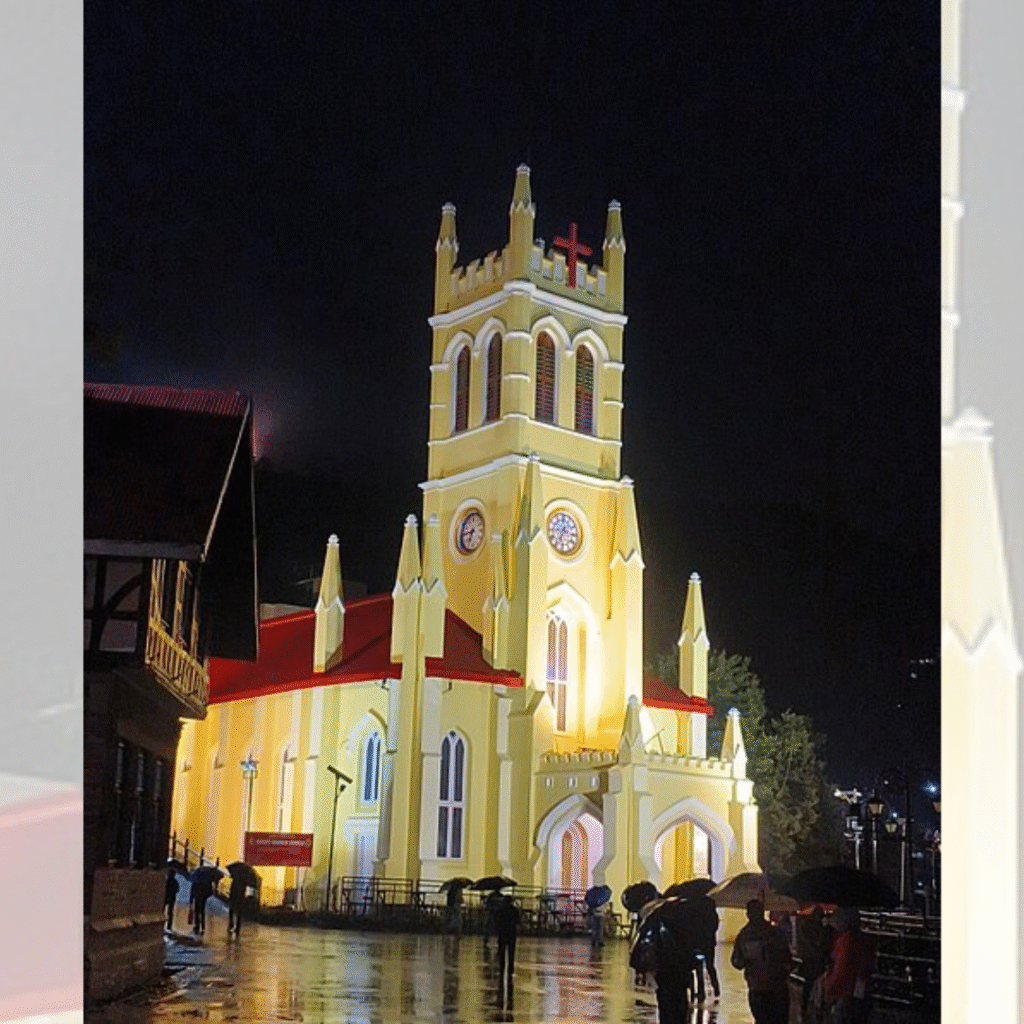
Nestled in the heart of Ridge lies Christ Church, Shimla, one of the most iconic landmarks from the British Raj in India. Built in 1857, this neo-Gothic masterpiece is the second oldest church in North India. Further, this cathedral is also home to some of the most captivating stained glass windows in the country. These windows are more than just decorative elements, they narrate stories, embody spiritual symbols, and echo a rich history of craftsmanship.
Symbolism and Spiritual Narrative
The stained glass windows of Christ Church are deeply symbolic, representing key virtues of Christianity. There are five prominent stained glass panels, each depicting one of the Christian virtues. These virtues are Faith, Hope, Charity, Fortitude, Patience, and Humility. These are not random choices; each virtue is personified through classical European iconography. Therefore, helping worshippers and visitors alike reflect on their deeper meanings.
For instance, Charity is often shown with children, extending a hand of love and care. Additionally, while Faith is depicted with a cross and chalice, representing spiritual conviction. These panels are not just decorative—they are visual sermons designed to inspire and guide.
Victorian Gothic Influence
The windows are designed in classic Victorian Gothic style, with pointed arches, ornate tracery, and a muted yet warm palette of stained glass. The light that filters through during early morning services or golden-hour afternoons transforms the church’s modest interior into a glowing sanctuary of color and calm.
This play of light and color was intentional. Gothic architecture sought to evoke awe, and the stained glass windows served as both spiritual metaphors and artistic statements. The Shimla church’s design is directly influenced by 19th-century English ecclesiastical architecture, giving a clear glimpse into the colonial attempt to recreate ‘home’ amidst the Indian hills.
Imported Craftsmanship
The stained glass for Christ Church was believed to have been imported from England during the British era. Artisans trained in traditional methods where colored glass is painted with details and then fired in kilns. This ensured longevity and brilliance. Despite more than 150 years of weathering Shimla’s changing climate, much of the glass has remained intact, a testament to its quality and preservation.
The craftsmanship stands in contrast to the simplicity of the church’s surroundings. While the structure is restrained in its overall design, the windows serve as vibrant focal points. Hence, they draw the eye and stir the imagination.
Cultural and Historical Significance
Beyond their religious significance, these stained glass windows are markers of a bygone era. They speak of a time when Shimla was the summer capital of British India. It was these churches like Christ Church were centers of community and colonial life. Today, these windows are as much historical artefacts as they are spiritual icons.
They continue to attract not only worshippers but also tourists, artists, and historians. Whether viewed through the lens of religion, art, or history, the stained glass windows of Christ Church offer a serene and colorful insight into India’s layered past.
In Conclusion
The stained glass windows of Christ Church, Shimla are more than artistic installations. They are a dialogue between faith, art, and history. They stand tall not just within the church but in the collective memory of those who walk the Ridge. Hence, reminding visitors of the enduring power of light, color, and belief.
